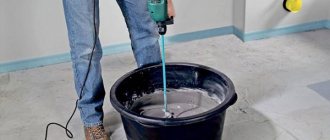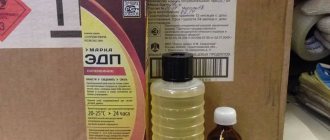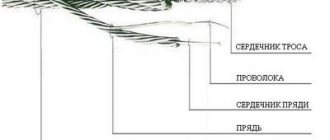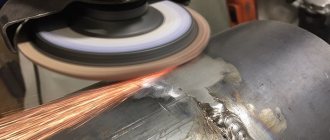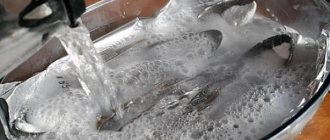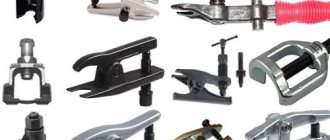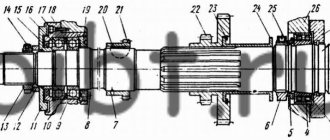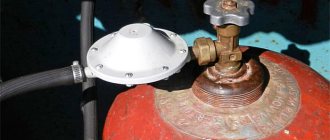How to work with epoxy resin
To work with epoxy resin you will need a hardener, a disposable cup, 2 syringes and a stirring stick.
Instructions for use:
Take a syringe, fill it with the required amount of resin and release it into a glass. Do the same with the hardener. Mixing proportions vary from manufacturer to manufacturer, so before starting work, carefully read the instructions for use. Incorrectly diluted epoxy does not harden well. Mix the resin and hardener thoroughly until the mixture becomes homogeneous.
You need to mix slowly and carefully; if you do it with sudden movements and quickly, bubbles will appear in the mixture. The liquid consistency of the composition will ensure that bubbles quickly escape; they will remain in the initially thick components
The density of the resin depends on the manufacturer. Insufficiently well mixed components will cause poor hardening of the composition. Polymerization does not occur instantly; you need to wait a little until the mass acquires the consistency required for work. Pour into a mold or make a lens. Wait for the time specified by the manufacturer in the instructions until the epoxy resin completely hardens.
Epoxy resin has conventional hardening stages:
- At first, the mass is very liquid and drains easily, which makes it most suitable for pouring into a mold. The liquid consistency allows the epoxy to penetrate into the smallest recesses; a thicker composition cannot do this, and the relief will not be very obvious.
- Over time, the epoxy resin becomes thicker and is suitable for making convex lenses on a flat base. It will not be possible to make such a lens from liquid resin - the composition will roll down from the workpiece. At this stage, it is best to fill non-relief forms at home.
- The least suitable consistency for the mixture to work with is like thick honey. When you put epoxy on a stick, bubbles easily form, which are very difficult to remove. At this stage, the composition is suitable for gluing the parts together. Epoxy is characterized by excellent adhesion and adheres perfectly to most materials (EDP glue was developed based on this property), but easily peels off from polypropylene, polyethylene, silicone, rubber, and surfaces coated with a film of fat.
- The epoxy resin becomes very thick and sticky, and it is difficult to separate a little from the bulk.
- The next stage is rubber. Epoxy does not stick to your hands, but easily wrinkles and bends, it can be used to make many products, but if you want it to harden in the desired position, then secure it, otherwise it will return to its original state.
- Fully cured epoxy resin. It cannot be pressed through with a fingernail; it feels like plastic.
Epoxy resin from different manufacturers has different curing times. The time for the onset of stages is determined exclusively experimentally. There is a soft epoxy resin that remains rubbery even after it has completely cured, which is ideal for some products.
Self-leveling floor manufacturing technology
So let's take a closer look at the process of making a self-leveling floor.
Calculation of material quantity
Epoxy resin in large volumes may seem expensive to you, and therefore you need to calculate the exact amount of material so as not to overpay. To do this, simply calculate the surface area that you plan to fill, then multiply the resulting number by the layer thickness that you want to obtain. All that remains is to convert the resulting volume into liters and you can purchase the material.
Stage 1. Surface preparation
It is best to form such a floor on a concrete base. The wood will absorb the resin and you may need more material. In this case, it is necessary to remove the old paint from the floor and seal all the cracks. In order for the resin to adhere better, it is advisable to treat the floor surface with sandpaper or a vibrating sander.
Before you start pouring, the surface should be degreased by washing it with soapy water and leaving to dry for a day.
Important! If you just recently poured a concrete floor, at least a month must pass before you can apply self-leveling floors. Increased surface humidity risks ruining all your efforts.
Before applying the resin, the floor should be primed with a special epoxy primer. It can be applied in one or two layers, but with the obligatory drying of each layer for at least 12 hours.
Step 2: Mixing Epoxy Resin
Pour the resin into the bucket and then add the hardener. Taking a construction mixer, the components need to be mixed slowly for 5-7 minutes. It is important not to rush so that the composition does not splatter and bubbles appear in it. If desired, you can add a dye of a suitable color to the composition.
Stage 3. Filling the first layer
Once the compound is ready, use a brush to apply the resin to the corners and edges of the floor. After this, pour the liquid mass into the center and, using a roller, spread over the entire surface. You should end up with a layer approximately 5mm thick.
Stage 4. Drawing (if necessary)
Once 72 hours have passed and the first layer has dried, you can apply the design.
Stage 5. Filling the second layer
Afterwards you can apply a finishing layer of epoxy resin. By the way, to create a special self-leveling floor with various decorative elements, you can use several layers.
What types of epoxy resin are there for creativity?
Today there are more than a dozen types of epoxy resins. They differ in consistency, color, properties, density of epoxy resin and other performance characteristics. Not all such compositions are used for creativity. Let's consider the main types of such material.
Characteristics of the popular type of epoxy resin ED-20
ED-20 has been considered the most popular brand of epoxy for decades. In turn, it is produced of the first and highest grade. First-class material has high viscosity and a yellowish color. Its lifespan is no more than 4 hours. Such a synthetic product is ideal for use in various industries: aviation, mechanical engineering, shipbuilding, and electrical engineering. Often, epoxy resin ED-20 is used as a base for adhesives, sealants, filling and impregnating compounds.
Product made from first grade ED-20 technical synthetic resin. It is cloudy and has a yellowish tint.
Another thing is the highest grade epoxy resin ED-20, made specifically for decorative products. It is characterized by an extreme level of transparency and good viscosity. This material is quite simple and pleasant to work with. It is this composition that is commonly called epoxy resin for creativity. It is represented on the market by various brands of manufacturers: from foreign to domestic.
epoxy resin ed-20
Jewelry compound ED-20
The best jewelry resins are considered to be brands such as Crystal Glass, Viva Decor, Epoxy. Depending on how you dilute them, the consistency can be thick or liquid, but the main thing is that the resulting solution itself is bubble-free and perfectly takes any shape. These manufacturers, like others producing jewelry compounds, also work with ED-16 and ED-22 resins.
epoxy resin Crystal Glass
Clear and colored epoxy resin for pouring
You look at the works made from compound and are amazed at how beautiful and deep the colors are. Where can I buy one, and what is the price for epoxy resin of this shade? As mentioned above, such a synthetic composition can be either transparent or yellowish, which has a negative impact on the aesthetics of the product.
Yellow epoxy
To add decorativeness and designer colors to synthetic resin products, entire lines of various pigments and fillers are produced. How bright the shade will be and how evenly the color will be mixed depends on the properties of the purchased brand of compound and, undoubtedly, the skill of the “creator” himself. Therefore, only experience and acquired skills will help you achieve the desired results.
Glitters for epoxyglitter for epoxy resin
Colorer for compoundacolorer for epoxy resin
However, relatively recently, such a product for decorating products as soft glass appeared on the Russian market. It is also often called colored epoxy resin, since the composition is based on just such a synthetic material. It is a kind of colored paste intended for application to any surface. When dry, it creates the effect of Marouana glass. Such compositions are very popular when painting glass, creating stained glass windows and other unusual things.
Soft glass from Italian class=”aligncenter” width=”800″ height=”450″[/img]Small Universe from Satishi Tomizu made of soft glass
Glass painting
Common brands
Let's make a short review of the brands available on the market, both domestic and imported.
- "Contact". Used in rooms with high humidity. Convenient sealant for pipes, toilets, bathroom plumbing.
- "Moment" from the manufacturer Hankel. It is not difficult to find in hardware and specialty stores for repairs, as it is quite popular. There are containers weighing from 5 grams on sale. Reliable and versatile to use.
- "Super Grip." It is an equal-component adhesive. Contains mineral enhancers that increase the strength of seams. Absolutely universal.
- "Bison". A transparent composition consisting of two components. Needed to fill voids, cracks, chips, restores the original appearance of products.
- "Class". Similar to the previous description. Used for gluing metals and alloys. Indispensable in the automotive industry, gluing pipes and sinks.
- "Second". The name speaks for itself. Gluing takes only 3 minutes.
- "Novocolor epoxy universal." Low shrinkage, high degree of adhesion, ideal for gluing large cracks and chips.
- "Metal Bond". The product sets within 5 minutes on wooden, plastic and other surfaces.
- Compound K-153.” A dark-colored composition for joining metal components that are in constant contact with a humid environment or petrochemical products.
- "Ultima". Mortar for decorative and facing works. You cannot do without it when repairing cars, watercraft, household appliances and plumbing.
- "Poxipol". It hardens within ten minutes after mixing the components, so gluing must be done quickly.
- "EDP". Connects different materials, from glass to metal. Corresponds to the stated price and quality.
- Epoxy steel. Composition for any metal bases. It can be classified as an auto chemical product because it is suitable for car repairs.
- "Done Deal" The solution, sold in a syringe package, forms a completely vacuum connection.
- "BisonEpoxy 5min." A rapidly polymerizing composition with a high setting speed.
- "Abro." An example of “cold welding” for metal bases. Available in white and black colors.
- "Novo Plus710". Consists of resin with the addition of a thickener and fiberglass. Can eliminate large chips, defects and cracks.
- "Uhu." Works well as a fill. It also connects materials made of plastic and metal.
- "Defence-EC". Epoxy glue is not susceptible to chemicals and is used in production. Sold in 10kg weight.
- "Epoxy Titan". Equal-component adhesive that forms an impact-resistant adhesive seam. You can buy it in tubes of 20 ml, 200 ml and a two-liter bucket.
Traditional Applications
Shrinkage when using ED-20 is very small. In addition, as we found out, this product polymerizes quite quickly. Thanks to these properties, this material has found very wide application both in industry and in construction or everyday life. ED-20 resin, the technical characteristics of which make this product almost universal, can be used, for example:
for repairing various types of electrically powered equipment;
- in instrument making;
- in the aviation industry;
- furniture industry;
- when repairing car structural elements;
- in the radio engineering industry.
This material is also widely used by designers. It can be used to create, for example, countertops, haberdashery, and various moisture-resistant products intended for use in bathrooms. Epoxy is also used for priming various types of surfaces.
Another area of use of ED-20 is the production of enamels, varnishes, and putties. Other brands of epoxy resins are also made using this material. In everyday life, this material is often used as glue. With its use, it is possible to fasten both wood and metal, plastic, ceramics, and glass.
Composition according to GOST
The characteristics of epoxy resin ED-20, like any other similar material, are determined, of course, primarily by its composition. According to current regulations, ED-20 must contain:
- mass fraction of epoxy groups - no more than 20-22.5%;
- saponified chlorine - 0.3-0.8%;
- chlorine ion - 0.001-0.005%;
- hydroxyl groups - 1.7%;
- volatile substances - 0.2-0.8%.
The average abundance of epoxy groups in this material is 20%, as reflected in its name.
Technical characteristics of epoxy resin
Before finding out what temperature epoxy resin can withstand after hardening, it is worth learning about the main technical parameters of this substance. These are the following characteristics:
- the complete polymerization process occurs within 24–36 hours;
- You can speed up the resin hardening procedure by increasing the temperature to +70⁰С;
- under conditions of low temperatures (up to +15⁰С), the hardening time of the resinous substance is reduced;
- when hardening, epoxy does not shrink or expand;
- after hardening, the resin can be subjected to any processing: grinding, polishing, drilling, turning, painting, etc.;
- the recommended operating temperature of epoxy resin is set in the range from -50⁰С to +150⁰С;
- the maximum permissible temperature during operation is up to +80⁰С;
- the hardened material shows excellent resistance to aggressive influences, including alkalis, solvents and high humidity.
Epoxy resin is often used for decorative purposes
Epoxy resin has a limited shelf life. It must be used no later than 1.5 years from the date of its release.
Melting temperature of a substance
According to technical regulations, it is established that the temperature at which epoxy melts is +155⁰C. But, given the stated technical characteristics, it is difficult to say that the epoxy will melt. Even heat-resistant epoxy glue or epoxy ED-20, which is common for household work, after polymerization, even at ultra-high temperatures, will behave as follows:
- crack;
- foam;
- change its structure without going into a liquid state (crumbling and breaking).
Some resins (depending on the type of hardener used) can catch fire, releasing large amounts of soot. The combustion process will continue until the moment of thermal replenishment (for example, in open flame conditions). As soon as the source of fire is eliminated, the hardened resin will stop burning.
Despite the ability of the resin to burn, such a substance is not a material with a high fire hazard.
Even when burning, epoxy is much safer than many other artificial substances. For example, polystyrene foam or polystyrene foam. Therefore, it makes no sense to talk about what temperature epoxy glue can withstand before melting. Almost always, hardened epoxy does not melt, but collapses, turning into a charred, shapeless mass.
Are there quick-setting resins?
All epoxies are divided into two large groups. These are structural and decorative (or jewelry) resins. Decorative epoxy substances are characterized by transparency and faster polymerization time. They are used mainly for design work and for the production of souvenirs.
Decorative resins have a faster curing time
Permissible operating temperature of finished products
Technical regulations have adopted certain standards for the operation of products and repaired items for which epoxy resin was used. These are the following indicators:
- constant temperature: from -40⁰С to +120⁰С;
- maximum permissible: from -40⁰С to +150⁰С.
But some brands of epoxy, according to manufacturers, have different characteristics. For example, with such extreme (maximum permissible) indicators:
Such epoxy substances are specific. Many professionals do not even classify them as epoxy, but rather as epoxy-organosilicon. The additional inclusion of silicon creates increased resistance of substances to thermal effects.
Drying time
The curing time depends on environmental factors and occurs within 24 hours. It is not advisable to use the products before the specified time interval has expired.
However, small household items (for example, jewelry) can be used after 12 hours.
Initially, the composition hardens in about 30-60 minutes. Cold welding requires 5-20 minutes. Be sure to check the instructions so that you have time to carry out all the necessary manipulations with the glue, otherwise it will be damaged.
“Flaws in the work must be eliminated immediately, without waiting for the composition to harden. To eliminate it, a rag or a small bandage is enough to blot off the excess mass. The remaining stains are removed mechanically."
Fever
During this process, heat is released, which leads to polymerization as a whole. In this case, the temperature of the substance can reach 100 degrees. Such indicators are more typical for large dilutions of polyester resin. During volume ebb, the largest increase in temperature is observed. When a lot of resin is used to cast the floor, the increase will be less high, due to the area in contact with air, self-cooling will occur faster.
If the temperature exceeds the permissible norms, then you can resort to placing the container in cold water, but it should be taken into account that polymerization will slow down. Temperatures above room temperature have an accelerating effect on the gelatinization stage, after which it will speed up the curing. Hardening first passes into the stage of formation of a rubber-like consistency; in this form, when pressed, the resin bends, but quickly returns to its original form. Until this moment, a standard 1.5-2 hours pass.
For hot stages, it is recommended to introduce 50% benzoyl peroxide with dibutyl phthalate. In this case, temperatures can rise to 100-130 degrees, these are quite high values, and require additional protection for the person doing the mixing; if dicumyl peroxide is used as a hardener, then the values can reach 160 degrees.
The temperature of the substance can reach 100 degrees.
Quantity per square meter
How much epoxy resin you will need is easy to understand once you find out the purpose of its use. When using resin as an adhesive substance, the quantity will be influenced by the properties of the surfaces being bonded:
- pores;
- smoothness;
- absorbency.
For floor treatments, for example, the amount of resin per area covered will matter. When covering a smooth cement floor, a small amount is enough to rid it of dust - only one hundred grams per square meter. But to make a strong coating and achieve excellent smoothness, you may need up to three kilograms of epoxy per square meter.
When making a self-leveling floor, advanced epoxy resin of various colors is used. The composition is poured onto the floor and distributed evenly over it due to its gravity. A single layer takes about a kilogram per “square”.
We eliminate the causes and their consequences
When epoxy resin interacts with different types of hardener, different substances can be obtained. They vary in strength and elasticity. And also in softness and elasticity. By combining the base substance and the hardener in different ways, varying their concentrations, a polymer with different characteristics is obtained.
However, with any combination of constituent components, the resin must be completely dry before applying subsequent layers to the epoxy resin. The composition does not harden for several probable reasons. You should understand them in detail to prevent difficulties when using the material.
Error in the proportion of components
Due to insufficient or excessive amounts of hardener, the result is often disrupted. A sticky and incompletely hardened layer that does not “set” for more than a day will have to be removed. Subsequent layers are not applied to undried epoxy resin.
To obtain an ideal coating, it is necessary to strictly observe the proportions. And an increase or deficiency of any of the components negatively affects the final result.
When reapplying the composition, you should check the ratio of hardener and epoxy resin. It is better not to add excess hardener to the already prepared solution. It is more correct to prepare the composition according to the proportions indicated in the instructions.
Incorrectly selected temperature mode
The mixture hardens at room temperature. However, the resulting coating will dry faster if the ambient temperature is increased. The effectiveness of the “setting” of epoxy resin largely depends on this factor.
In cool weather, the polymerization reaction time increases. Which entails an increase in the drying time of the composition. When the ambient temperature decreases by 10°C, the polymerization time increases by 10-15 hours.
What should I do? The following tips will help you maintain the desired curing rate:
- Curing will proceed faster if the temperature is maintained. If necessary, from an external source;
- if it is not possible or difficult to maintain the temperature at the proper level, you can initially use a hardener designed to work at low temperatures to prepare the mixture.
According to those who use epoxy resin, there are better brands. For certain conditions, it is better to choose the appropriate version of the substance. AF-2 should be considered the best domestic brands of hardeners that “work” at low temperatures. And the best slow hardener is the DTB-2 brand.
Epoxy resin and hardener do not mix thoroughly
The most common mistake made, which entails a decrease in the rate of hardening of the composition, is insufficient mixing of the components. The reason for the lack of rapid hardening of epoxy resin is that it was not mixed for too long and thoroughly. And this happens due to an incomplete polymerization reaction. Indeed, it is as a result of this that the shape of the liquid substance changes: the resin gives a durable and beautiful solid layer and ceases to be sticky.
To make a uniform composition, it is necessary to mix the mixture in the correct quantities. The epoxy resin and the selected type of hardener must be mixed thoroughly. Mixing should be carried out until the composition is completely homogeneous. There should be no places left in the resulting solution where there is a clear predominance of one of the components.
If it is planned to introduce additives or fillers into the composition (for example, a silicone filler that improves the final result), they should be used only after thoroughly mixing the mixture.
The situation can be corrected only by deleting the unsuccessful layer. A new mixture is prepared. And its components are thoroughly mixed and applied to the prepared surface.
Incorrect selection of components
It is better to use a different hardener for each type of epoxy resin. This will eliminate the risk of prolonged hardening of the composition. It also improves the properties of the resulting coating. The same applies to the polyester resin catalyst. It must be selected in accordance with the type of epoxy.
When taking into account the listed factors when preparing a mixture based on epoxy resin, a high-quality coating is obtained. Under favorable conditions, it dries in no more than one day.
Receiving [edit | edit code ]
Epoxy resin was first obtained by the French chemist Castan in 1936 [1].
Epoxy resin is produced by polycondensation of epichlorohydrin
with various organic compounds: from phenol to edible oils, for example, soybean [
source not specified 1389 days
]. This method is called “epoxidation”.
Valuable grades of epoxy resins are obtained by the catalytic oxidation of unsaturated compounds. For example, this is how cycloaliphatic resins are obtained, valuable because they contain absolutely no hydroxyl groups and are therefore very hydroresistant, tracking- and arc-resistant.
For practical use of the resin, a hardener is needed. The hardener can be a polyfunctional amine or anhydride, sometimes an acid. Curing catalysts such as Lewis acids and tertiary amines, usually capped with a complexing agent such as pyridine, are also used. After mixing with a hardener, the epoxy resin can be cured - converted into a solid, infusible and insoluble state. If it is polyethylene polyamine (PEPA), then the resin will harden within a day at room temperature. Anhydride hardeners require 10 hours of time and heating to 180 °C in a heat chamber (and this does not take into account cascade heating from 150 °C).
How to speed up the hardening of epoxy: useful tips
To speed up the polymerization process, some inexperienced craftsmen advise adding more hardener to the resin than required by the instructions. In practice, with this option, the master will only make things worse. If you add too much catalyst to the solution, the quality of the epoxy itself will deteriorate:
- after hardening, the resin will become brittle and fragile;
- it may heat up, which will damage the material;
- when the mass is heated too quickly, it boils and forms a lot of air bubbles (working with it becomes pointless).
Therefore, the most accessible and safe method of accelerating polymerization is to use additional accelerators. Their role can be played by normal heating of the surrounding air. The higher it is, the faster polymerization and curing of the epoxy will occur.
Security measures
When working with epoxy, safety precautions should be observed. Wear gloves, a respirator and thick clothing. The room should be well ventilated to prevent harmful vapors from entering the respiratory tract.
If glue accidentally gets on exposed skin, immediately wash it off with soap and water and wipe dry.
Dishes that have been diluted with glue must not be reused and should be thrown away immediately. Large-scale work must be done outside the home, preferably in the fresh air.
Characteristics of polyester resin
- Mechanical properties.
Polyester resins are significantly inferior to epoxies in this parameter. Therefore, mechanical stress and deformation often lead to cracks and delamination in products. - Adhesive properties.
Polyesters have poor adhesion and therefore do not work well as an adhesive. - Shrinkage.
Polyester can shrink up to 7-10%. However, the shrinkage process may take time, and delamination will not be immediately obvious. - Water resistance.
After curing, the surface has weak waterproofing properties and is permeable to water. - Best before date.
Polyester has a short shelf life: on average 6 months - 1 year. - Polymerization.
The curing speed of polyesters is much faster than epoxies and usually takes several hours. The drying process can be accelerated using an MEKP catalyst. - Smell.
During hardening, the polymer components emit a strong odor. - Boiling.
Polyester polymers are not prone to boiling. - Durability.
Polyesters form a durable coating, but are prone to the formation of microcracks, are less resistant to impacts, and less durable than epoxy coatings. - UV resistance.
Polyester surfaces are UV resistant and do not require a topcoat to prevent yellowing or deterioration from sunlight. - Difficult to use.
The material is quite easy to use and does not require special knowledge and experience. - Areas of application.
Polyesters are used in cases where low cost and ease of operation are more important than strength and durability. For example, in landscape design, plumbing work, auto tuning, etc.
- Price.
Polyester resin costs 2-3 times less than epoxy. - Environmental friendliness and safety.
Polyesters contain carcinogenic styrene, which produces a strong unpleasant odor. Resin components are flammable liquids, catalysts are flammable and explosive. But there are resins on the market without styrene and with a reduced content.
Harm to health
You need to work with epoxy carefully. This is especially true for resin, because during the dilution process, drops can fall on the skin, causing burns. To work with this composition you need to use gloves.
Important! If drops of epoxy resin get on your skin, remove them with alcohol and then wash your hands with soap. If the epoxy gets into your eyes or mucous membranes, consult a doctor immediately!
Moreover, from the mixing process until the resin completely hardens, toxic compounds are released from the composition that can cause poisoning. Therefore, you need to work with the resin in question in a room that is well ventilated or has an exhaust hood. If work takes place in a garage or other room that is poorly ventilated, it is advisable to wear a respirator. But after hardening, this resin becomes absolutely safe!
What determines the hardening time?
The question posed in the title of this article is so popular for the simple reason that you will not find a clear answer in any instruction as to how long it takes epoxy resin to dry - simply because the timing depends on many variables. For beginners, it is necessary to clarify that it, in principle, begins to fully harden only after a special hardener is mixed into it, which means that the intensity of the process largely depends on its properties.
Hardeners come in many forms, but one of two is almost always used: either polyethylene polyamine (PEPA) or triethylene tetraamine (TETA). It’s not for nothing that they have different names - they differ in chemical composition, and therefore in their properties.
PEPA is a so-called cold hardener that fully “works” without additional heating (at room temperature, usually 20-25 degrees). You will have to wait about a day for it to harden. And the resulting craft can easily withstand heating up to 350-400 degrees and only at a temperature of 450 degrees and above will it begin to collapse.
The chemical hardening process can be accelerated by heating the composition with the addition of PEPA, but this is usually not recommended, because the tensile, bending and tensile strength indicators can decrease by up to one and a half times.
TETA works a little differently - it is a so-called hot hardener. Theoretically, hardening will occur at room temperature, but in general the technology involves heating the mixture to about 50 degrees - this will make the process go faster.
In principle, it is not worth heating the product above this value, and when casting volumetric objects over 100 “cubes”, this is strictly prohibited, because TETA has the ability to self-heat and can boil - then air bubbles will form in the thickness of the product, and the contours will obviously be disrupted. If everything is done according to the instructions, then the epoxy craft with TETA will be more resistant to high temperatures than its main competitor and will have increased resistance to deformation.
The above-described differences when choosing are as follows: TETA is the only option if you need a product of maximum strength and resistance to elevated temperatures, and increasing the pour point by 10 degrees will speed up the process threefold, but with the risk of boiling and even smoking
If outstanding properties in terms of durability of the product are not needed and it is not so important how long the workpiece hardens, it makes sense to choose PEPA
The speed of the process is also directly affected by the shape of the craft. We mentioned above that the TETA hardener is prone to self-heating, but in fact this property is also characteristic of PEPA, only on a much smaller scale. The subtlety is that such heating requires maximum contact of the mass with itself.
Roughly speaking, 100 grams of the mixture in the shape of a perfectly regular ball, even at room temperature and using TETA, hardens in about 5-6 hours without outside intervention, heating itself on its own, but if you spread the same volume of mass in a thin layer over a square measuring 10 by 10 cm, there won’t really be any self-heating and you’ll have to wait a day or more for full hardness.
Of course, proportion also plays a role - the more hardener in the mass, the more intense the process. At the same time, those components that you did not think about at all can take part in thickening, and this is, for example, fat and dust on the walls of the mold for pouring. These components can spoil the intended shape of the product, so degreasing is carried out with alcohol or acetone, but they also need to be given time to evaporate, because they are plasticizers for the mass and can slow down the process.
If we are talking about decoration or other crafts, then there may be foreign fillers inside the transparent epoxy mass, which also affect how quickly the mass begins to thicken. It has been noticed that most fillers, including even chemically neutral sand and fiberglass, accelerate the hardening process, and in the case of iron filings and aluminum powder this phenomenon is especially pronounced.
Kinds
The main characteristics by which epoxy adhesive is classified include the following:
- compound;
- consistency;
- curing method.
It can be of two types in composition.
- One-component adhesives use liquid or solvent resin. The product is packaged in tubes and is ready for use without preparation. It is used for gluing small parts or sealing gaps.
- Most often, epoxy glue is two-component. It is sold as a kit, which includes two tubes. One tube contains resin in paste form, the second contains a hardener in liquid or powder form. The contents of the two tubes are mixed and used immediately, since after some time the mixture loses its ability to stick together. Most manufacturers produce two-component glue. Its application is almost universal.
There are two types of glue consistency.
- Liquid glue has the appearance of a gel. It saves time as it does not need to be prepared, and is also convenient for application to the surface.
- The plastic mass will have to be prepared. To do this, cut off the required amount from the contents of a cylindrical tube or bar, knead it with your hands and moisten it with water. The plastic mass is great for repairing chips, holes, and other defects.
The curing method divides adhesives into the following types:
- in the first, curing occurs at room temperature;
- the second must be heated before introducing the hardener.
What temperature can epoxy resin withstand after hardening?
Epoxy resins, without which it is difficult to imagine modern high-tech production, often have to work under very harsh conditions. This includes increased radiation, exposure to chemical reagents on epoxy products, and a wide range of temperatures, from minus 30 to 200°C degrees. Moreover, this does not mean a one-time extreme decrease or increase to the specified limits, but the constant impact of such temperatures on the binding material.
There is no need to say that household EDP glue or ED-20, ED-22 resin are not suitable for such temperature changes. Already fully cured, they will first begin to crack, then, depending on the hardener once used, they will foam without passing into the liquid phase, and will begin to break down into small fractions, changing color and structure.
They can also catch fire, again depending on the starting substances and in what form they were polymerized, in the form of a thin coating or a monolith that occupies a certain and large volume in space. Thin epoxy film can ignite, producing enormous amounts of soot, if it comes into direct contact with an open flame. But combustion will continue only as long as such contact is maintained and intense heat is supplied. Remove the flame from the epoxy film and it immediately goes out.
Therefore, there is no point in talking about the fire hazard of using epoxy compounds in everyday life or during repairs. They burn no better than other artificial materials, and are much safer than the same foamed polystyrene or polystyrene foam, just remember the White Horse nightclub with its numerous victims from the products of burning ceiling tiles, with the release of phosgene.
Therefore, there is no point in talking about a certain melting temperature of hardened epoxy resin; in the vast majority of cases, it does not melt, but simply collapses, turning into a structureless charred mass.
Concrete adhesive
When repairing concrete products, an epoxy composition is also used. Two-component formulations (resin and thickener) are usually used. They glue metal parts to concrete and reinforced concrete components.
Adhesives help create a good adhesive layer between new and old concrete, thus filling cracks. Remember that the adhesive mass should not be used on a wet surface and it must be allowed to dry before applying a new layer of concrete.
An example of such an adhesive is “Eporip”, which is a thixotropic compound that is applied horizontally and vertically to concrete with a brush.
